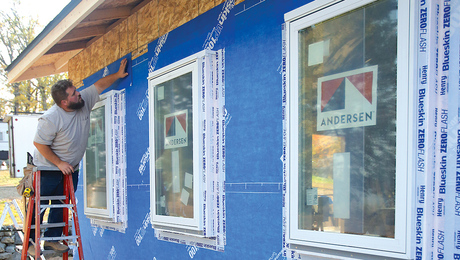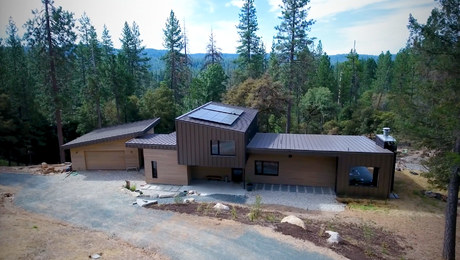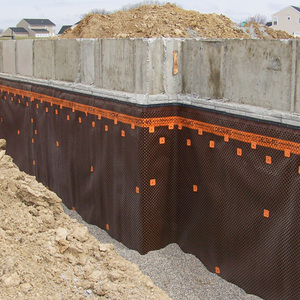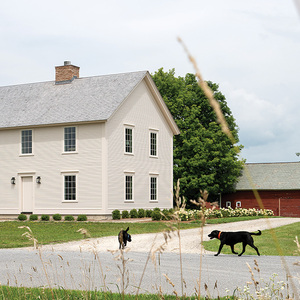I’m running one curcuit to my detached garage. Will be used for a couple lights, door opener and occasionally my small table saw, miter saw, etc. The run from the panel to the penetration in the garage is about 100′. I am planning to use a 15 amp breaker. Should I use 12g wire for this run? To add to the run, I often use an extension cord from the garage to do my sawing on the driveway.
Discussion Forum
Discussion Forum
Up Next
Video Shorts
Featured Story

Getting the details right for a wall assembly with the control layers to the exterior and lots of drying potential.
Highlights
"I have learned so much thanks to the searchable articles on the FHB website. I can confidently say that I expect to be a life-long subscriber." - M.K.
Fine Homebuilding Magazine
- Home Group
- Antique Trader
- Arts & Crafts Homes
- Bank Note Reporter
- Cabin Life
- Cuisine at Home
- Fine Gardening
- Fine Woodworking
- Green Building Advisor
- Garden Gate
- Horticulture
- Keep Craft Alive
- Log Home Living
- Military Trader/Vehicles
- Numismatic News
- Numismaster
- Old Cars Weekly
- Old House Journal
- Period Homes
- Popular Woodworking
- Script
- ShopNotes
- Sports Collectors Digest
- Threads
- Timber Home Living
- Traditional Building
- Woodsmith
- World Coin News
- Writer's Digest


















Replies
You are really asking for trouble on this one. Make a call to 4Lorn. He steer you right
15 amps for whole bldg. I got 100 amps and still got to watch what I,m loading.
You need at least #10 for that distance.
And I would run muti-wire circuit (10-3) so that you get two 120 volt circuits and can also run 240 equipment.
Another important reason for multiwire is that it cuts voltage drop in half.
If ignorance is bliss why aren't more people
happy?
"Another important reason for multiwire is that it cuts voltage drop in half."Yes, no, sorta.Only if he can and wants to reconfigures his saw for 240 volts. Don't have any idea if this is a "job site" saw, which is usually universal motor or a contractors saw (induction).And not not knowing his background I was even wondering if I should suggest the multiwire or not.
Quoted from a post by DanH: "Another important reason for multiwire is that it cuts voltage drop in half."
Voltage drop also gets cut in half if there is a complementary 120V load on the other leg, essentially taking the neutral out of the circuit. I've seen that written often, but it only works when both hot legs are under similar load, and if the wiring is long and/or light gauge, you will see lights dimming or going brighter on one leg when switching large loads on the other leg.
But for a shed, a multiwire circuit can make sense. It's about the only place (besides a panel feeder, or course) I'd use one.
Be seeing you...
Edited 4/4/2006 1:23 pm ET by TKanzler
Of course, it helps to plan the loads to "encourage" balance when it's most important. If you're only going to have one big 120v load like a table saw, put all the lighting loads on the other side, eg.
If ignorance is bliss why aren't more people
happy?
Hi,
The voltage drop for a 200 ft round trip on #12 with 15 amps is about 5 volts. It would be about twice that for #14, and a bit more that half that for #10.
I agree with the others that if you are going to the work of running a circuit to your garage that it would be better to run more capacity -- like 220V #10 with a 30 amp breaker, and a little sub panel in the garage.
If you do run the single #12 circuit, why not put a 20 amp breaker on it?
Gary
http://www.BuildItSolar.com
If you are set on just running one circuit, I would use #12 or #10. I would also install it in a 3/4 in. PVC conduit. That way if you ever decide you need more power, you can pull in new conductors without digging up your yard. 3/4 in. PVC would be good for 3#6 and 1#10 ground and 60 amps. You don't sound like electricity is you're thing so if you decide to go the subpanel route consult a pro.
Tim
That's a tough pull.
Last Sunday I helped a buddy wire up his hot tub 3 - #8's & 1- #6 in a 3/4" pvc conduit with the max 4 90's, used soap , still snapped the pull string twice.Do you look to the government for an entitlement, or to GOD for empowerment. BDW
I never said it would be an easy pull, but I've pulled tougher. You are right, 1" would be a lot easier... especially for 3#12's.
Tim
Actually, there's a few junction boxes along the way as it goes from the panel to the back of the house. Then there's 1 1/4 pvc conduit that I buried in the yard last summer. That part of the run is about 35' and has two 90's.
After reading your suggestions, I think I might run a second 20a curcuit for outlets. Called in the big guns, electrician who will come over after work and help me with it. I
3/4" may be OK for a shorter run but for the slight cost difference, why not make it easier and go with 1"? it's a lot easier to make a 100' pull through the larger size and most people don't have a 100' fish tape.
"I cut this piece four times and it's still too short."
I run a 13amp lawn mower at the end of 200' of 14g extension cord for a few hours a week.
I expect you will either have no problems or enough problems to ned to run larger wire.
(Our voltage appears to be around 128-132 at the outlet.)
Extension Cord Wire Guage Size
Amp Rating
50 ft
100 ft
200 ft
300 ft
400 ft
500 ft
0-2 amps
18 gauge
18 gauge
18 gauge
16 gauge
16 gauge
14 gauge
2-3 amps
18 gauge
18 gauge
16 gauge
14 gauge
14 gauge
12 gauge
3-4 amps
18 gauge
18 gauge
16 gauge
14 gauge
12 gauge
12 gauge
4-5 amps
18 gauge
18 gauge
14 gauge
12 gauge
12 gauge
10 gauge
5-6 amps
18 gauge
16 gauge
14 gauge
12 gauge
10 gauge
10 gauge
6-8 amps
18 gauge
16 gauge
12 gauge
10 gauge
10 gauge
8 gauge
8-10 amps
18 gauge
14 gauge
12 gauge
10 gauge
8 gauge
8 gauge
10-12 amps
16 gauge
14 gauge
10 gauge
8 gauge
8 gauge
6 gauge
12-14 amps
16 gauge
12 gauge
10 gauge
8 gauge
6 gauge
6 gauge
14-16 amps
16 gauge
12 gauge
10 gauge
8 gauge
6 gauge
6 gauge
16-18 amps
14 gauge
12 gauge
8 gauge
8 gauge
6 gauge
4 gaugeDo you look to the government for an entitlement, or to GOD for empowerment. BDW
You are really lucking out.First that adnormally high voltage and really outside of spec.And I am guessing that you have "thin" grass and it never gets very high.A table saw won't run long on that distance if he tries to rip some 6/4 maple or oak.
My weeds are thick and often get high and wet.Today my home electric is about 121-123. Voltage seems to vary a lot.As I said. perhapa 14g will be satisfactory perhaps not.
>>(Our voltage appears to be around 128-132 at the outlet.)
Hi GHR, measure it under load (cut some tall grass). I bet you get different numbers with 13 amps 200' out on a 14 awg cord.
"Let's get crack-a-lackin" --- Adam Carolla